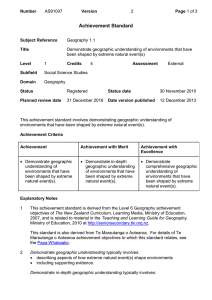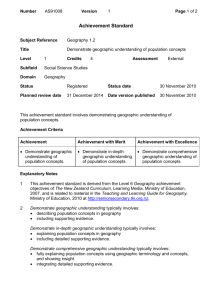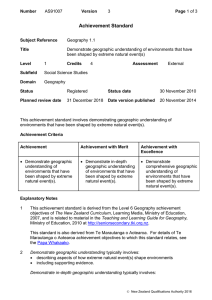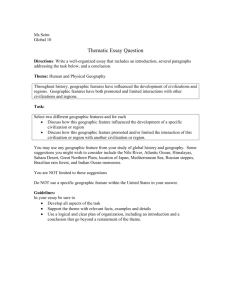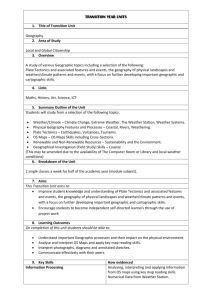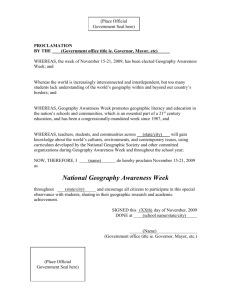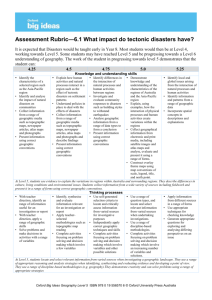91007 Demonstrate geographic understanding of
advertisement
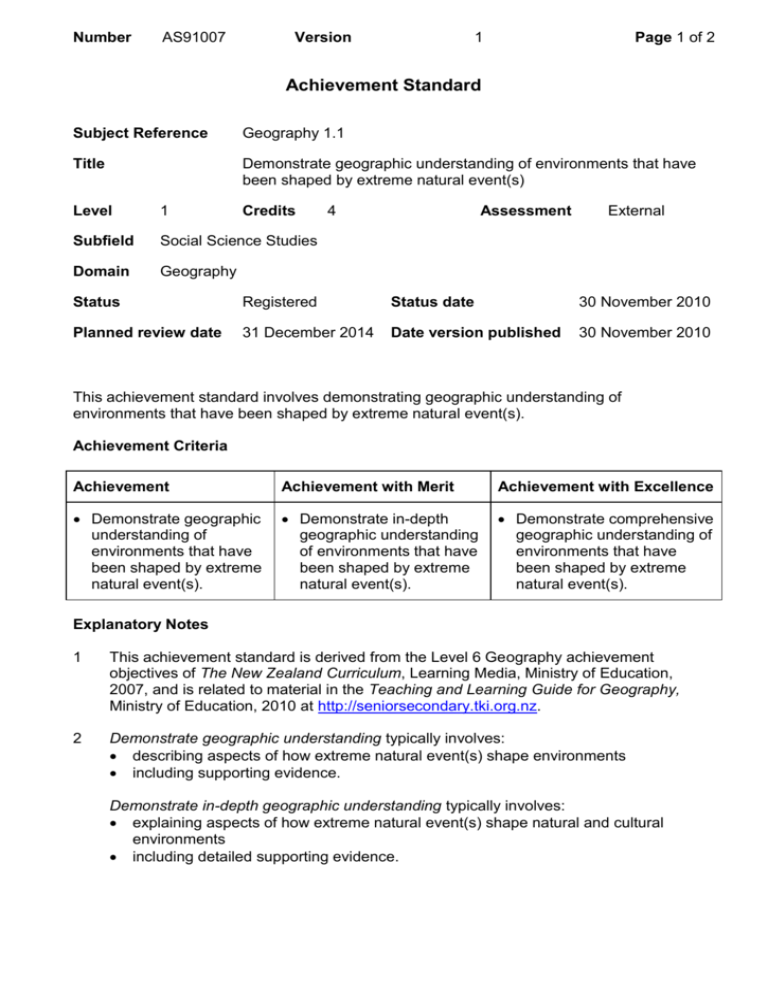
Number AS91007 Version 1 Page 1 of 2 Achievement Standard Subject Reference Geography 1.1 Title Demonstrate geographic understanding of environments that have been shaped by extreme natural event(s) Level 1 Credits Subfield Social Science Studies Domain Geography 4 Assessment External Status Registered Status date 30 November 2010 Planned review date 31 December 2014 Date version published 30 November 2010 This achievement standard involves demonstrating geographic understanding of environments that have been shaped by extreme natural event(s). Achievement Criteria Achievement Achievement with Merit Achievement with Excellence Demonstrate geographic understanding of environments that have been shaped by extreme natural event(s). Demonstrate in-depth geographic understanding of environments that have been shaped by extreme natural event(s). Demonstrate comprehensive geographic understanding of environments that have been shaped by extreme natural event(s). Explanatory Notes 1 This achievement standard is derived from the Level 6 Geography achievement objectives of The New Zealand Curriculum, Learning Media, Ministry of Education, 2007, and is related to material in the Teaching and Learning Guide for Geography, Ministry of Education, 2010 at http://seniorsecondary.tki.org.nz. 2 Demonstrate geographic understanding typically involves: describing aspects of how extreme natural event(s) shape environments including supporting evidence. Demonstrate in-depth geographic understanding typically involves: explaining aspects of how extreme natural event(s) shape natural and cultural environments including detailed supporting evidence. Number AS91007 Version 1 Page 2 of 2 Demonstrate comprehensive geographic understanding typically involves: fully explaining aspects of how extreme natural event(s) shape natural and cultural environments using geographic terminology and concepts, and showing insight integrating detailed supporting evidence. 3 Geographic understanding refers to an understanding of how natural environments and people interact and the consequences of that interaction. Extreme natural event(s) refers to one type of naturally occurring hazard that has a major impact on people’s lives, such as: earthquakes, floods, tsunami, landslides, tropical cyclones. Supporting evidence refers to specific, relevant information from different environments. Environments refer to either different places that are affected by one type of extreme natural event or different places that are affected by a single extreme natural event. Integrating refers to relevant examples being woven throughout the evidence to support explanations. 4 Aspects are selected from: natural and cultural characteristics (features) of the environments that make them vulnerable to the extreme natural event(s) natural processes that operate to produce the extreme natural event(s) effects of the extreme natural event(s) on the natural environments effects of the extreme natural event(s) on the cultural environments how different groups of people have responded to the effects of the extreme natural event(s). 5 Assessment Specifications for this achievement standard can be accessed through the Geography Resources page found at www.nzqa.govt.nz/ncea/resources. Replacement Information This achievement standard replaced unit standard 5083. Quality Assurance 1 Providers and Industry Training Organisations must be accredited by NZQA before they can register credits from assessment against achievement standards. 2 Accredited providers and Industry Training Organisations assessing against achievement standards must engage with the moderation system that applies to those achievement standards. Accreditation and Moderation Action Plan (AMAP) reference 0233
